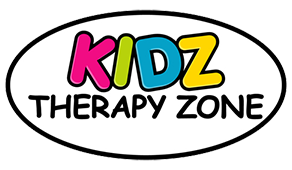Occupational Therapy
Occupational therapy (OT) utilizes therapeutic tasks and modalities to engage and enhance children’s participation and independence in their everyday activities and environments. OT considers the whole individual, including their physical, psychological, and social well-being, within their unique environments. This unique approach make OT a vital part of health care for many children.
Our OT practitioners use play and motivating activities to improve the following:
- Fine Motor Precision
- Grasp Development
- Handwriting
- Visual-Motor Integration
- Visual Perceptual Skills
- Manual Dexterity
- Postural Stability and Strength
- Balance
- Bilateral Coordination
- Eye-Hand Coordination
- Body Awareness and Scheme
- Oral-Motor Skills
- Cognitive Skills
- Sensory Processing
- Social Skills
- Attention and Focus
- Self-Care Skills
- Torticollis
Physical Therapy
Physical therapy (PT) addresses gross motor skills through a variety of interventions that incorporate functional play. Our physical therapists not only assess if a child can perform a certain skill, but also the quality of movement to ensure the child is participating in gross motor movements safely, effectively, and efficiently.
Our PT practitioners use therapeutic and motivating activities to improve the following:
- Range of Motion
- Postural Control and Abnormalities
- Functional Strength
- Gross Motor Coordination
- Balance
- Functional Mobility
- Gait
- Idiopathic Toe Walking
- Developmental Delays
- Torticollis
Speech Therapy
Speech therapy (ST) addresses an individual’s ability to communicate effectively in their various environments.
Our ST practitioners use engaging activities to address and improve the following:
- Expressive Language
- Receptive Language
- Stuttering
- Voice Problems
- Articulation
- Cognitive Skills
- Social Skills
- Feeding and Swallowing
- Oral-Motor Skills
- Augmentative and Alternative Communication (AAC) Device Use
Interactive Metronome
Interactive Metronome (IM) is an intensive computer based program used to improve a child’s neurological processing abilities, which affect attention, motor planning, sensory processing, timing, and sequencing.
IM, as a modality, can assist with improving the following:
- Independence with Self-Care Activities
- Performance in Sports and Leisure Activities
- Attention and Focus Related to Daily Function and Academic Performance
- Ability to Follow Directions
- Self-Esteem
- Social Skills
- Behavior and Impulsivity
Sensory integration
Sensory processing refers to the body’s ability to properly take in and utilize sensory information from both internal and external stimuli. When a child has challenges with sensory processing he or she may have difficulty participating in activities with certain sensory components, such as textures or sounds. Sensory processing challenges can appear in any combination of the following senses:
- Hearing
- Taste
- Smell
- Sight
- Touch
- Muscle/Joint Sense (Proprioception)
- Gravity Sense (Vestibular)
At some point in people’s lives, most have difficulty processing sensory information in some way; however, when that difficulty interferes with a person’s ability to function in daily life, it becomes a problem. Sensory integration therapy has been shown to be beneficial for improving the following:
- Gross Motor Skills
- Fine Motor Skills
- Self-Regulation and Organization
- Attention
- Following Directions
